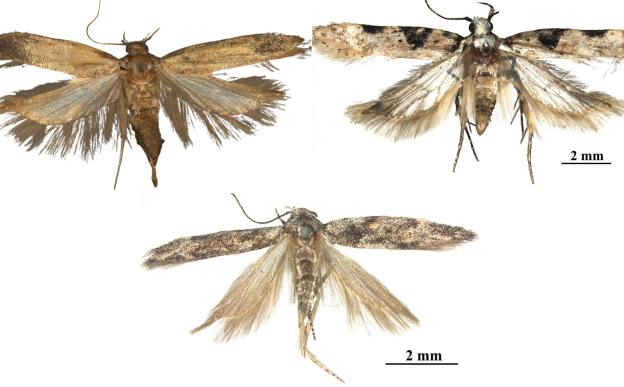Photo: Siddharth Kankaria/Research Matters
Being older than the Himalayas and listed as one of the world’s eight “hottest hotspots” of biological diversity, the Western Ghats is unique in many ways. These mountains are home to around 7,402 species of flowering plants, 1,814 species of non-flowering plants, 139 species of mammals, 508 species of birds, 179 species of amphibians and 6,000 species of insects. Even to this day, new species that have been lurking in these forests are discovered. There are around 325 globally threatened species in the forests of Western Ghats, including the Nilgiri Thar, Lion-tailed macaque and Nilgiri Langur.
The forests of the Western Ghats are unique too, comprised of both moist deciduous forests and montane rain forests. The upper elevations of the Western Ghats throw up a landscape that is distinctive from the forests found lower down. While mountaintops are covered with grasslands, the ridges between mountains are covered with patches of ancient, stunted tropical forests called sholas. This geography and its forest ecology may be the reason behind the evolution of a plethora of interesting flora and fauna.
Trees constitute a major part of forest communities and their abundance and arrangement, to a large extent, influences the ecology and dynamics of the forest. In long continuous evergreen forest systems like the rain forests, the number of tree species and their arrangements in space appear to be ideal for the movement of pollens and sometimes seeds, carried by various seed dispersers and pollinators.
But what about the trees of the sholas, where the forests are naturally discontinuous and patchy? Research has shown that the services provided by pollinators and seed-dispersers are mainly influenced by the arrangement and connectivity of the tree species. For example, the ‘Myristica Swamp Forests’ in the Western Ghats contains many critically endangered tree species associated with swamps. The connectivity and arrangement of these swamps play a key role in the dispersal and movement of their seeds and pollens.
Connecting the patches of Shola forests
Connectivity is important for maintaining the ecological health of natural systems. Patches of the shola forests are connected to each other in two ways – structurally and functionally. Structural connectivity refers to how the forest patches are physically arranged in space. The movement of animals and the mechanisms behind seed dispersal and pollination of trees and plants between the patches is called ‘functional connectivity’. Often functional connectivity is indirectly assessed using the more easily measured structural connectivity.
Not many studies exist that highlight the structure, pattern or implications of connectivity in shola forests. A recent study by researchers from the Ashoka Trust for Research in Ecology and the Environment (ATREE), Bangalore, Institute of Science Education and Research (IISER) Kolkata, and University of Guelph, Canada, is an exception. The study has attempted to understand structural connectivity between the forest patches and its influence on woody species’ communities in the shola forests of Western Ghats.
“In this study, I have looked at the spatial structure (physical arrangement) of shola patches in the landscape and used this as a proxy for functional connectivity. Many researchers do this as it is difficult to actually measure movement of animals or seeds in the field”, says Dr. Arundhati Das from ATREE, and the lead author of this research.
The researchers aim to determine the extent to which the abundance and distribution of shola tree species is influenced by environmental factors as opposed to the spatial connectivity of forest patches.
But where do these researchers begin? Studying the shola community means looking at the number of individuals of each species in each forest patch, and comparing between patches. The researchers have surveyed around 600 square kilometres of intact shola forests in the Upper Nilgiri Plateau in southern India at an altitude of 1800 – 2630 meters above the sea level. They have sampled the vegetation, bioclimate, topography and soil at each patch and using the data, have evaluated the role of spatial structure versus environmental factors, using various models representing different degrees of spatial connectivity between patches.
Tree Species Distribution in Shola forests
Shola forests contain a variety of trees, some of which are not found anywhere else in the world (endemic) like Michelianilagirica, Litseaoleiodes and Cinnamomumwightii. The forests typically have an upper story of small trees, and a low understory of dense shrubs. Mosses and ferns are also found in the understory.
What decides which of the trees grow in different patches? The findings of the study points out that environmental factors like climate, topography and soil play a dominant role, with spatial connectivity playing a much smaller but significant part in shaping the tree and shrub community of shola patches. The responses of tree species to the environment largely determine which species occurs in which patch, and the number of individuals of each species per patch. This, in turn, shapes the plant ‘metacommunity’ – a set of local plant communities connected to each other through dispersal and other inter-specific interactions.
Threats and need for conservation
The shola forests help in water retention and act as a precious source of water for high altitude animals and plants. These forests are also the origin of many streams and rivers. Hence, it is imperative to protect these forests in their pristine form and guard them against the spread of invasive species. An alarming threat to this ecosystem has been climate change.“The findings of our research indicate that changes in temperature and rainfall seasonality brought on by anthropogenic climate change could alter the distribution and abundance of shola woody species, many of which are narrowly distributed endemics”, cautions Prof. Das.
Timely management efforts to conserve endemic trees can go a long way.“Effective management of woody species diversity in shola forests would require conservation of these forests across the range of environmental conditions under which they occur”, reiterates Prof. Das. With climate change looming large and causing irregularities in temperature and rainfall, how these shola forest trees will cope is something that must be monitored. These ancient forests are a great example of how change in environmental conditions directly influences the overall ecosystem; demonstrating the intricate connections between micro-environments and macro-life forms.






